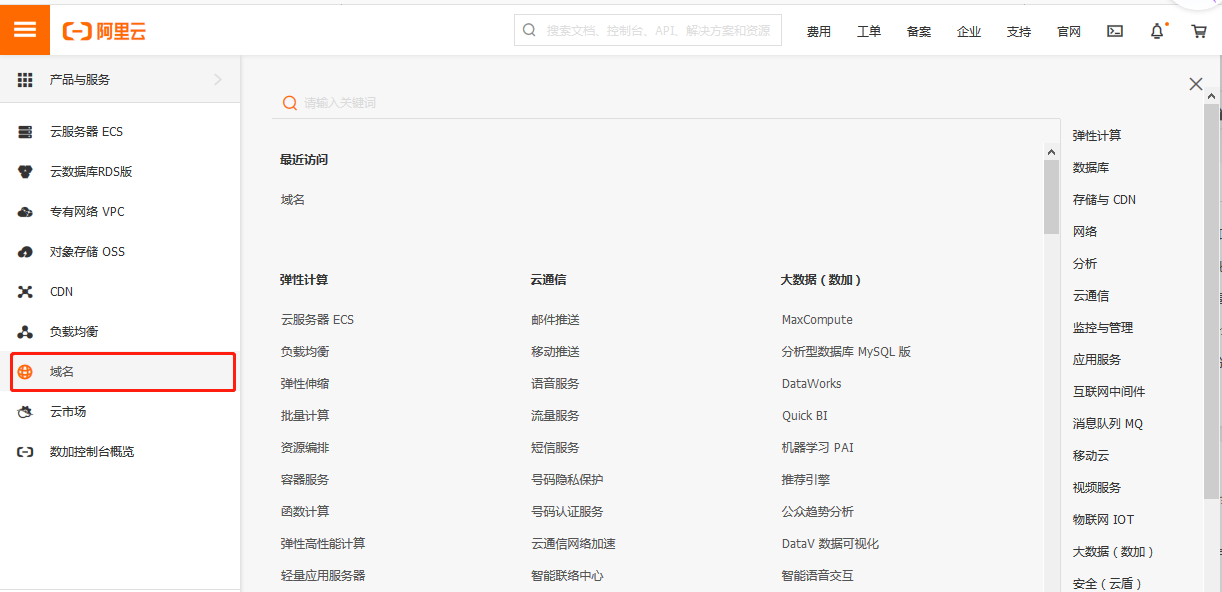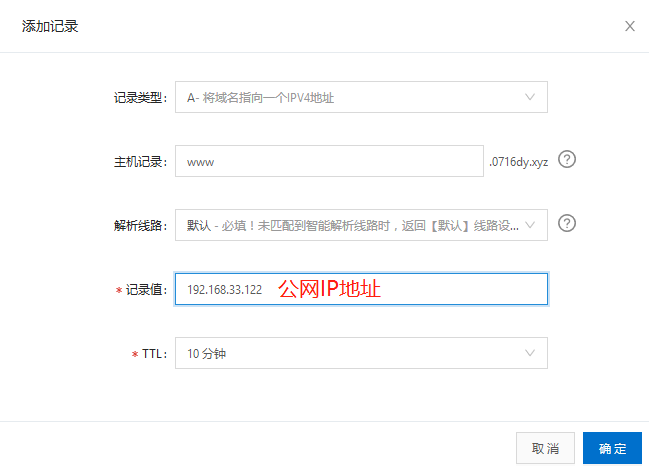Nginx
Nginx是一款轻量级的HTTP服务器,采用事件驱动的异步非阻塞处理方式框架,这让其具有极好的IO性能,时常用于服务端的反向代理和负载均衡。
Nginx的优点
- 支持海量高并发:采用IO多路复用epoll。官方测试Nginx能够支持5万并发链接,实际生产环境中可以支撑2-4万并发连接数。
- 内存消耗少:在主流的服务器中Nginx目前是内存消耗最小的了,比如我们用Nginx+PHP,在3万并发链接下,开启10个Nginx进程消耗150M内存。
- 免费使用可以商业化:Nginx为开源软件,采用的是2-clause BSD-like协议,可以免费使用,并且可以用于商业。
- 配置文件简单:网络和程序配置通俗易懂,即使非专业运维也能看懂
Nginx的安装
安装必须软件
yum -y install gcc gcc-c++ autoconf pcre-devel make automake
yum -y install wget httpd-tools vim
添加yum源
vim /etc/yum.repos.d/nginx.repo
[nginx]
name=nginx repo
baseurl=http://nginx.org/packages/centos/7/$basearch/
gpgcheck=0
enabled=1
软件安装
yum install nginx
测试环境
nginx -v
查看nginx的安装目录
rpm -ql nginx
nginx.conf配置文件解读和配置
nginx.conf 文件是Nginx总配置文件,在我们搭建服务器时经常调整的文件。
进入etc/nginx目录下,然后用vim进行打开
cd /etc/nginx
vim nginx.conf
#运行用户,默认即是nginx,可以不进行设置
user nginx;
#Nginx进程,一般设置为和CPU核数一样
worker_processes 1;
#错误日志存放目录
error_log /var/log/nginx/error.log warn;
#进程pid存放位置
pid /var/run/nginx.pid;
events {
worker_connections 1024; # 单个后台进程的最大并发数
}
http {
include /etc/nginx/mime.types; #文件扩展名与类型映射表
default_type application/octet-stream; #默认文件类型
#设置日志模式
log_format main '$remote_addr - $remote_user [$time_local] "$request" '
'$status $body_bytes_sent "$http_referer" '
'"$http_user_agent" "$http_x_forwarded_for"';
access_log /var/log/nginx/access.log main; #nginx访问日志存放位置
sendfile on; #开启高效传输模式
#tcp_nopush on; #减少网络报文段的数量
keepalive_timeout 65; #保持连接的时间,也叫超时时间
#gzip on; #开启gzip压缩
include /etc/nginx/conf.d/*.conf; #包含的子配置项位置和文件
default.conf 配置项讲解
进入conf.d目录,然后使用vim default.conf进行查看。
server {
listen 80; #配置监听端口
server_name localhost; #配置域名
#charset koi8-r;
#access_log /var/log/nginx/host.access.log main;
location / {
root /usr/share/nginx/html; #服务默认启动目录
index index.html index.htm; #默认访问文件
}
#error_page 404 /404.html; # 配置404页面
# redirect server error pages to the static page /50x.html
#
error_page 500 502 503 504 /50x.html; #错误状态码的显示页面,配置后需要重启
location = /50x.html {
root /usr/share/nginx/html;
}
# proxy the PHP scripts to Apache listening on 127.0.0.1:80
#
#location ~ \.php$ {
# proxy_pass http://127.0.0.1;
#}
# pass the PHP scripts to FastCGI server listening on 127.0.0.1:9000
#
#location ~ \.php$ {
# root html;
# fastcgi_pass 127.0.0.1:9000;
# fastcgi_index index.php;
# fastcgi_param SCRIPT_FILENAME /scripts$fastcgi_script_name;
# include fastcgi_params;
#}
# deny access to .htaccess files, if Apache's document root
# concurs with nginx's one
#
#location ~ /\.ht {
# deny all;
#}
}
Nginx服务相关命令
nginx #启动nginx服务
nginx -s stop #停止nginx服务
nginx -s quit #重容退出nginx服务 nginx -s reload #重新加载nginx配置文件systemctl命令操作nginx
systemctl start nginx.service #启动nginx服务
systemctl stop nginx.service #停止nginx服务
systemctl restart nginx.service #重启nginx服务
查看nginx相关服务
netstat -nltp | grep nginx #查看nginx相关端口信息
ps aux | grep nginx #查看是否存在nginx进程
自定义错误页面
准备好404.html
<html> <meta charset="UTF-8"> <body> <h1>404页面没有找到!</h1> </body> </html>
cd /etc/nginx/conf.d/
vim default.conf
server {
listen 80; #配置监听端口
server_name localhost; //配置域名
location / {
root /usr/share/nginx/html; #服务默认启动目录
index index.html index.htm; #默认访问文件
}
error_page 500 502 503 504 /50x.html; #错误状态码的显示页面,配置后需要重启
error_page 404 /404.html; # 配置404页面
配置访问权限
server {
listen 80; #配置监听端口
server_name localhost; //配置域名
#注意 nginx里面的配置都是谁先触发,谁起作用,[先出现的配置会对后出现配置做覆盖和补充],所以allow必须放在deny的前面
location / {
root /usr/share/nginx/html; #服务默认启动目录
index index.html index.htm; #默认访问文件
allow 192.168.33.122; #只允许192.168.33.122访问
deny all; #其他IP地址都不允许访问
}
error_page 500 502 503 504 /50x.html; #错误状态码的显示页面,配置后需要重启
error_page 404 /404.html; # 配置404页面
#error_page 404 http://www.xmoban.cn/demo/404moban/13/; #也可以将404页面替换为一个404的网址
location = /50x.html { root /usr/share/nginx/html; }
}
nginx基于端口号配置虚拟主机
基于端口号来配置虚拟主机,算是Nginx中最简单的一种方式了。原理就是Nginx监听多个端口,根据不同的端口号,来区分不同的网站。我们可以新建多个配置文件来创建多个虚拟主机
cd /usr/share/nginx/html/
mkdir virtual01
cd /etc/nginx/conf.d/
vim virtual01.conf
server{
listen 8001;
server_name localhost;
location /{
root /usr/share/nginx/html/virtual01;
index index.html;
}
}
在/usr/share/nginx/html/virtual01下创建一个测试页面index.html
<h1>welcome port 8001</h1>
测试8001端口是否可以访问
http://localhost:8001
基于IP的虚拟主机
cd /etc/nginx/conf.d/
vim virtual01.conf
server{
listen 8001;
server_name 192.168.33.122; #修改IP地址为192.168.33.122
location /{
root /usr/share/nginx/html/virtual01;
index index.html;
}
}
http://192.168.33.122:8001 #测试192.168.33.122的端口是否可以访问
域名映射
https://wanwang.aliyun.com/ #阿里云域名注册 需要阿里云的账户登录


购买完毕后 到控制台

选择注册好的域名 进行解析


10分钟左右会生效

修改地址到域名
server{
listen 80;
server_name www.0716dy.xyz; #修改为自己注册的域名即可
location / {
root /usr/share/nginx/html/;
index index.html index.htm;
}
}
手机站和网页站自动切换
server{
listen 80;
server_name www.0719dy.xyz;
location / {
root /usr/share/nginx/pc;
if ($http_user_agent ~* '(Android|webOS|iPhone|iPod|BlackBerry)') {
root /usr/share/nginx/mobile;
}
index index.html;
}
}
反向代理配置
upstream tomcats{
server ip:8080; #Tomcat1
server ip:8080; #Tomcat2
}
## Start www.redis.com.cn ##
server {
listen 80;
server_name www.0719dy.xyz;
## send request back to apache ##
location / {
proxy_pass http://tomcats;
#Proxy Settings
proxy_redirect off;
proxy_set_header Host $host;
proxy_set_header X-Real-IP $remote_addr;
proxy_set_header X-Forwarded-For $proxy_add_x_forwarded_for;
proxy_next_upstream error timeout invalid_header http_500 http_502 http_503 http_504;
proxy_max_temp_file_size 0;
proxy_connect_timeout 90;
proxy_send_timeout 90;
proxy_read_timeout 90;
proxy_buffer_size 4k;
proxy_buffers 4 32k;
proxy_busy_buffers_size 64k;
proxy_temp_file_write_size 64k;
}
}
反向代理还有些常用的指令,我在这里给大家列出:
proxy_set_header :在将客户端请求发送给后端服务器之前,更改来自客户端的请求头信息。
proxy_connect_timeout:配置Nginx与后端代理服务器尝试建立连接的超时时间。
proxy_read_timeout : 配置Nginx向后端服务器组发出read请求后,等待相应的超时时间。
proxy_send_timeout:配置Nginx向后端服务器组发出write请求后,等待相应的超时时间。
proxy_redirect :用于修改后端服务器返回的响应头中的Location和Refresh。
GZIP压缩
http {
.....
gzip on;
gzip_types text/plain application/javascript text/css;
.....
}
Nginx提供了专门的gzip模块,并且模块中的指令非常丰富。
gzip : 该指令用于开启或 关闭gzip模块。
gzip_buffers : 设置系统获取几个单位的缓存用于存储gzip的压缩结果数据流。
gzip_comp_level : gzip压缩比,压缩级别是1-9,1的压缩级别最低,9的压缩级别最高。压缩级别越高压缩率越大,压缩时间越长。
gzip_disable : 可以通过该指令对一些特定的User-Agent不使用压缩功能。
gzip_min_length:设置允许压缩的页面最小字节数,页面字节数从相应消息头的Content-length中进行获取。
gzip_http_version:识别HTTP协议版本,其值可以是1.1.或1.0.
gzip_proxied : 用于设置启用或禁用从代理服务器上收到相应内容gzip压缩。
gzip_vary : 用于在响应消息头中添加Vary:Accept-Encoding,使代理服务器根据请求头中的Accept-Encoding识别是否启用gzip压缩。



